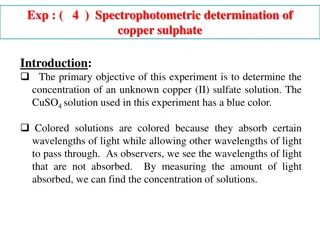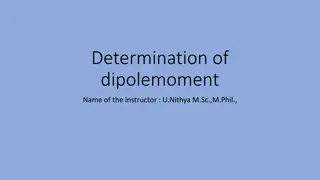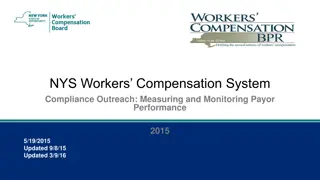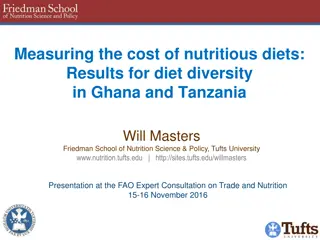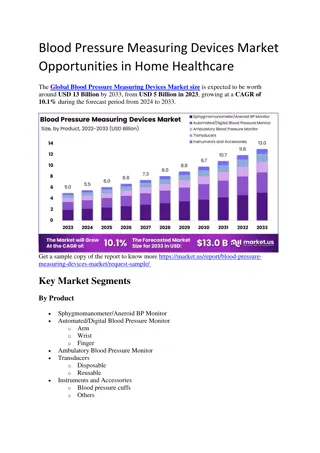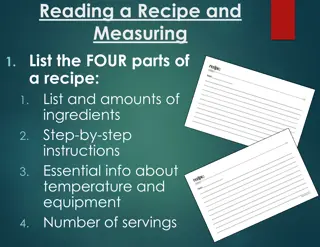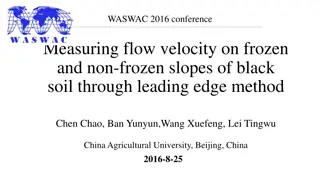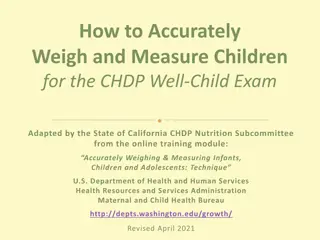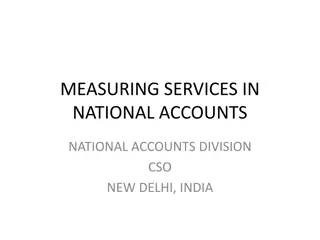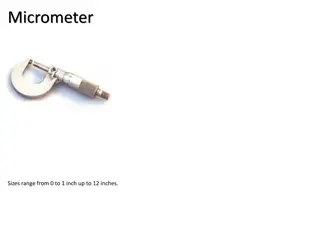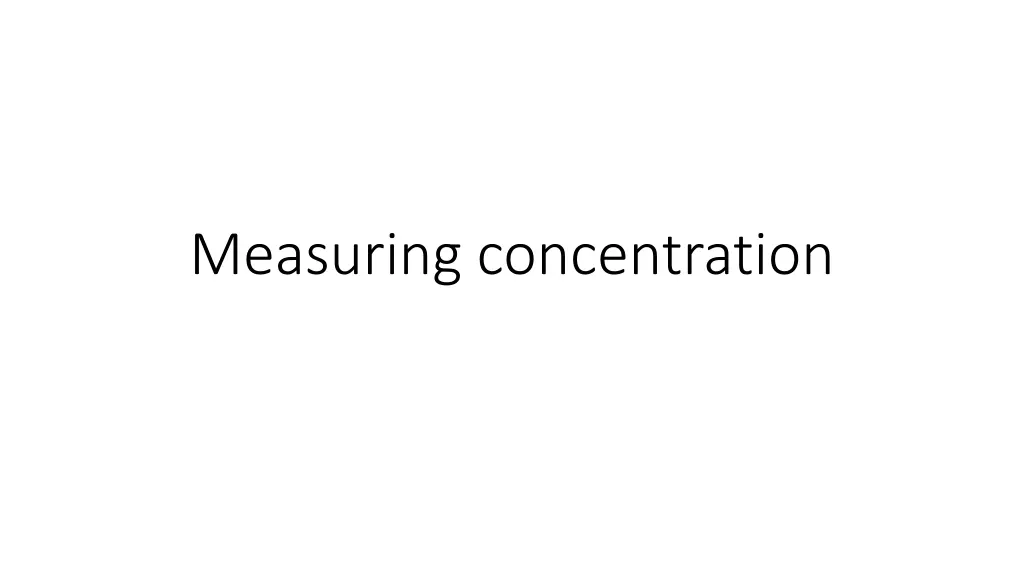
Understanding Concentration Measurements in Chemistry
Learn about units of concentration such as g/L, mol/L, ppm, %, and Molar (M) in chemistry. Explore how to calculate concentrations in g/L, ppm, mol/L, and % compositions, along with dilution processes with examples provided.
Download Presentation

Please find below an Image/Link to download the presentation.
The content on the website is provided AS IS for your information and personal use only. It may not be sold, licensed, or shared on other websites without obtaining consent from the author. If you encounter any issues during the download, it is possible that the publisher has removed the file from their server.
You are allowed to download the files provided on this website for personal or commercial use, subject to the condition that they are used lawfully. All files are the property of their respective owners.
The content on the website is provided AS IS for your information and personal use only. It may not be sold, licensed, or shared on other websites without obtaining consent from the author.
E N D
Presentation Transcript
Units of concentration The units of concentration tell us the relative amount of solute dissolved in a solvent. g/L or gL-1(sometimes mg/L or mgL-1) mol/L or molL-1 (sometimes labelled M) Ppm (parts per million or ppb parts per billion) % concentrations
gL-1 This tells us how many grams of solute are dissolved in 1 litre of solution. Concentration (gL-1) = mass of solute (g) Volume of solution (L) Eg 1. What is the concentration, in gL-1of a solution containing 8.00g of sodium chloride in 500mL of solution? Eg2. What is the concentration in gL-1of a solution containing 5.00g of glucose in 250 mL of solution?
ppm For solutions that have very low concentrations, parts per million, ppm, units are used. ppm can be thought of as grams per 1 000 000 grams or the mass in mg per kg 1 ppm = 1mg/kg = 1mg/L Concentration (ppm) = mass of solute (mg) mass of solution (kg) Eg A sample of tap water is found to contain 0.0537g of NaCl per 250.0g of solution. Calculate the concentration of NaCl in parts per million (ppm)
Molar (M) = molL-1 Concentration (molL-1) = amount of solute(mol) volume of solution (L) c = ? or n = cV ? Eg 1 Calculate the molar concentration of a solution that contains 0.105 mol of KNO3dissolved in 200mL of solution. Eg 2 Calculate the concentration, in molL-1, of a solution that contains 4000mg of ethanoic acid (CH3COOH) dissolved in 100mL of solution.
% compositions %m/m = g in 100g of solution What is the concentration, in %(m/m), of a 300g solution of KNO3that contains 15 g of solute %m/v = g in 100mL of solution In 5.0mL dose of cold and flu medicine, there is 2.00mg of the active ingredient. What is the concentration of the chemical, in mgL-1and %(m/v)? % v/v = mL in 100mL of solution
Dilution The process of adding more solvent to a solution is called dilution. While the number of solute particles stays the same the concentration of the solution decreases. add water We can use n=cV
Dilution questions Calculate the concentration of the solution formed when 10.0mL of water is added to 5.00mL of 1.2M HCl. A laboratory technician wishes to produce 5.00L of 2.50M sulfuric acid from a stock bottle of 18.0M H2SO4. What volume of the concentrated acid will be required?

